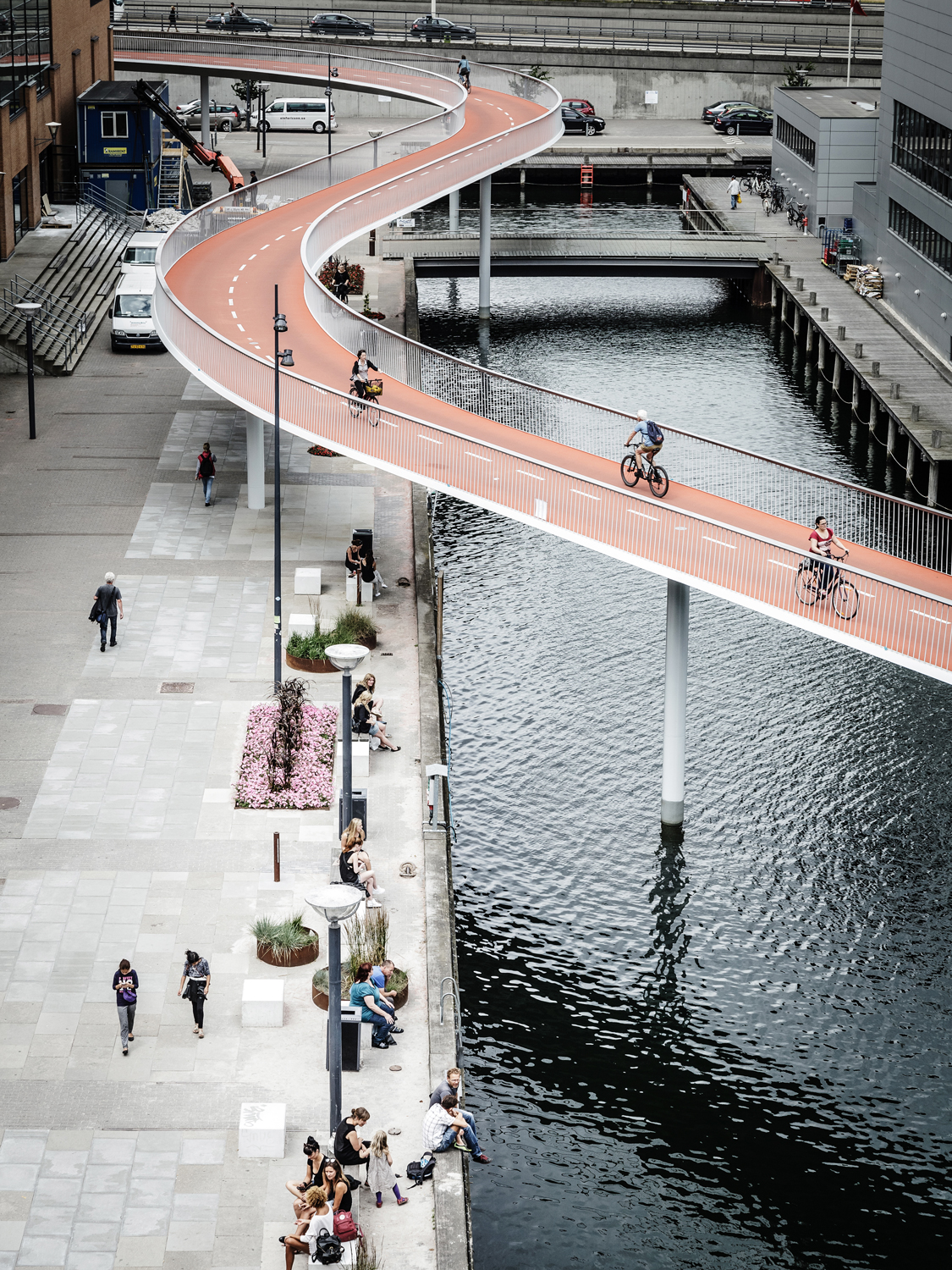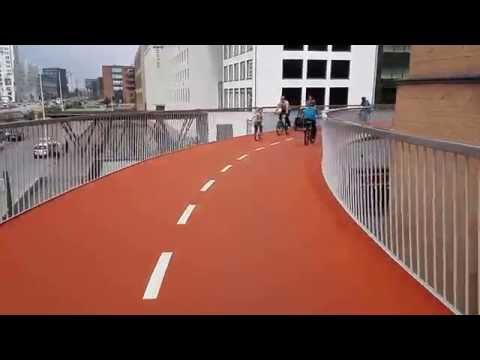Bicycle Bridge by Dissing + Weitling in Copenhagen
By the year 2025, Copenhagen aims to be the world’s first CO2 neutral capital. The chances of this happening are looking good. The Danish capital is forging ahead with ambitious environmental goals according to a stringent masterplan that includes energy production and green mobility such as a consequent cycling policy.
Infrastructure for cyclists
Projects such as the Cykelslangen (bycicle bridge) by Dissing + Weitling Architects are examples in this context. Since opening in 2014, the 190 m long bridge has become an architectural landmark in the city. The steel construction leads cyclists along a serpentine path across the harbour basin in the city centre, silently gliding up to 7 m above the water’s surface. Serving as a link between Klavebod Brygge and Havenholmen, the bike path is illuminated at night, its bright orange paving a proud signal of the city’s cycling culture.
Urban spaces
Driving the paradigm shift towards climate neutrality, Copenhagen reinvents itself. The active climate policy is part of the future-forward programme, as is the redevelopment of the port along with many attractive urban spaces that become urban living rooms for the citizens. In Copenhagen, leisure and climate protection go often hand in hand. This is the case not only for the CopenHill by BIG (Bjarke Ingels Group) – an energy power plant with a 450 m long ski slope on its roof – but also with the famous harbour baths and many other exciting architectural projects.
Read more in Detail 7/8.2021 and in our book København. Urbane Architektur und Öffentliche Räume. Edition DETAIL, 312 pages, Munich 2021.




